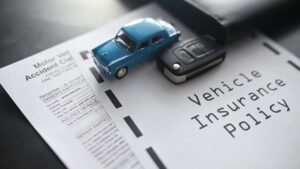Managing auto insurance can feel like a daunting expense, especially for small business owners navigating tight budgets. Vehicles are often essential for daily operations—whether you’re making deliveries, meeting clients, or transporting materials—but insurance costs can be a major financial burden.
The good news? There are practical ways to save on auto insurance without compromising on coverage or compliance. This guide will walk you through everything small business owners need to know about auto insurance, from understanding essential coverage options to leveraging technology and real-life cost-saving strategies.
By the end of this checklist, you’ll have the tools and insights to protect your business, employees, and bottom line.
Understanding Auto Insurance for Businesses
Before you can save money on auto insurance, it’s important to know your options and requirements. Business auto insurance isn’t a one-size-fits-all solution—it comes with multiple coverage types, each serving different purposes.
Types of Auto Insurance Coverage
Here’s a quick breakdown of the core coverage options to consider:
- Liability Insurance: Covers damages if your driver is at fault in an accident, including injuries and property damage. This is typically required by law.
- Collision Insurance: Pays for damage to your business vehicle caused by a collision, regardless of fault.
- Comprehensive Insurance: Protects against non-collision risks like theft, fire, or natural disasters.
- Uninsured/Underinsured Motorist Coverage: Provides protection if your driver is hit by someone who doesn’t have enough insurance.
- Hired and Non-Owned Auto Insurance: Covers vehicles your business uses but doesn’t own, like rental cars or employee-owned cars used for work purposes.
Legal Requirements for Business Auto Insurance
Each state has its own requirements for business auto insurance. At a minimum, most states mandate liability coverage. Failing to meet these requirements can result in hefty fines and legal troubles. It’s vital to ensure your business complies with local regulations.
Pro Tip: Keep documentation of your insurance policies readily accessible for audits and accident claims.
Factors Affecting Auto Insurance Rates
Auto insurance premiums vary greatly depending on several factors. While some aspects (like the location of your business) are largely out of your control, others are manageable with proactive planning.
Key Factors That Influence Premiums
- Driving History: A clean driving record leads to lower premiums, while past accidents or violations can increase costs significantly.
- Vehicle Type: Luxury or high-performance vehicles generally cost more to insure than standard models.
- Business Location: Urban businesses usually face higher premiums due to increased risks of accidents and theft.
- Mileage: The more your vehicles are on the road, the higher the premiums due to increased risk.
- Coverage Levels: Higher coverage limits and additional add-ons naturally raise premiums.
Tips for Managing Your Rates
- Implement strict driving policies to encourage safer behavior among employees.
- Choose vehicles with safety features like anti-theft systems and advanced braking technology.
- Regularly review mileage usage and identify opportunities to reduce driving.
Cost-Saving Strategies for Small Business Auto Insurance
Now comes the exciting part—strategies to save money while maintaining top-tier protection.
1. Bundle Your Insurance Policies
Many insurers offer discounts when you bundle auto insurance with other policies, such as general liability or property insurance. Consolidating your policies with one provider simplifies management and reduces overall costs.
2. Implement Safety Improvements
Encourage safer driving habits among your employees and invest in vehicle safety features. Training programs, dashcams, and anti-theft devices can reduce risks and signal to insurers that your business is serious about safety.
3. Regularly Review Your Coverage
Don’t set your auto insurance policy and forget it. Conduct annual check-ups to ensure your coverage matches your current needs. For instance, if a vehicle is no longer in use, you can adjust your policy accordingly to avoid overspending.
4. Negotiate with Insurers
It pays to shop around and periodically negotiate with your insurance provider. Highlight your clean claims history or safety initiatives to secure better rates.
Quick Win: Ask your insurer about discounts for paying your premium annually instead of monthly—it often saves money in the long run.
The Impact of Technology on Auto Insurance Costs
Technology isn’t just transforming the way we drive; it’s also reshaping how businesses manage auto insurance.
Telematics and Usage-Based Insurance (UBI)
Telematics uses GPS and onboard diagnostics to collect data on driving behavior, such as speed, braking, and mileage. Insurers can use this data to offer lower premiums to businesses with safe driving records.
Example: Some insurers offer usage-based insurance programs, where you pay based on actual mileage. This is particularly advantageous for businesses with vehicles that aren’t used daily.
Fleet Management Tools
Advanced fleet management software provides insights into vehicle performance and driver behavior. This can help you:
- Schedule timely maintenance to avoid costly repairs or accidents.
- Address reckless driving through real-time monitoring.
AI-Powered Risk Assessments
Artificial intelligence is enabling insurers to tailor premiums based on an enterprise’s specific risk profile, making it easier for businesses to identify cost-saving opportunities.
Case Studies: Real-Life Cost Savings
Hearing how other businesses have successfully reduced their premiums can spark actionable ideas for your own operations.
Case Study 1: The Courier Company
A courier business with a fleet of 20 vehicles reduced its premium costs by 25% by installing dashcams and enrolling its drivers in defensive driving courses. These measures not only lowered insurance rates but also improved employee morale and safety.
Case Study 2: The Small Construction Firm
A construction company was paying for comprehensive coverage on vehicles that were only used seasonally. By adjusting its policy during off-peak months, the company saved over $3,000 annually.
Case Study 3: The Tech Startup
A startup used telematics to monitor its small fleet’s driving habits. Within six months, it qualified for additional discounts due to consistent safe driving scores.
Take Control of Your Auto Insurance Costs Today
Auto insurance doesn’t have to break the bank for your small business. By understanding your coverage, managing the factors that influence your premiums, and leveraging cost-saving strategies, you can protect your vehicles and grow your business without unnecessary expenses.
Does your business have a unique auto insurance saving tip? Share it in the comments—we’d love to hear from you!
Looking for a deeper conversation or tailored advice? Connect with our team today and explore solutions personalized for your business needs.




